The dagger, which may have been used for ritualistic purposes during the Iron Age, was embedded in a chunk of clay that fell from a cliff during a heavy storm.
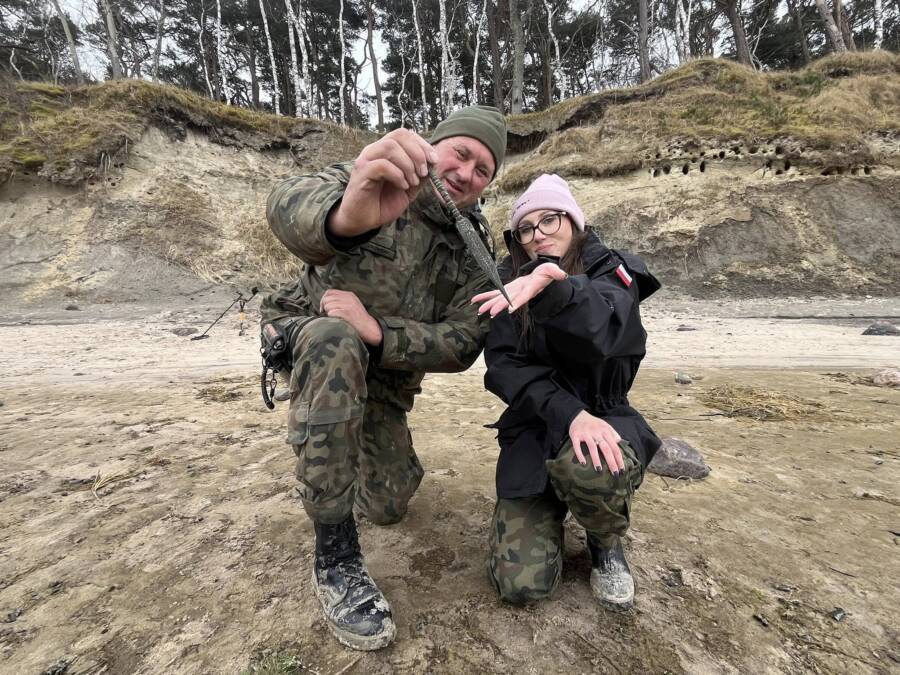
Museum of the History of Kamień LandMetal detectorists Jacek Ukowski and Katarzyna Herdzik pose for a photo on the beach where they found the dagger.
Recent storms that tore through the Baltic Sea and surrounding regions also brought a fascinating piece of history to light. Two metal detectorists were searching a beach in northern Poland following heavy rainfall when they came across a small dagger in a piece of clay that had fallen from a nearby cliff.
Jacek Ukowski and Katarzyna Herdzik immediately notified the Museum of the History of Kamień Land about their discovery. Experts there determined that the “richly ornate” dagger was 2,800 years old — and now they hope to learn more about its origins.
Finding A 2,800-Year-Old Dagger On A Polish Beach
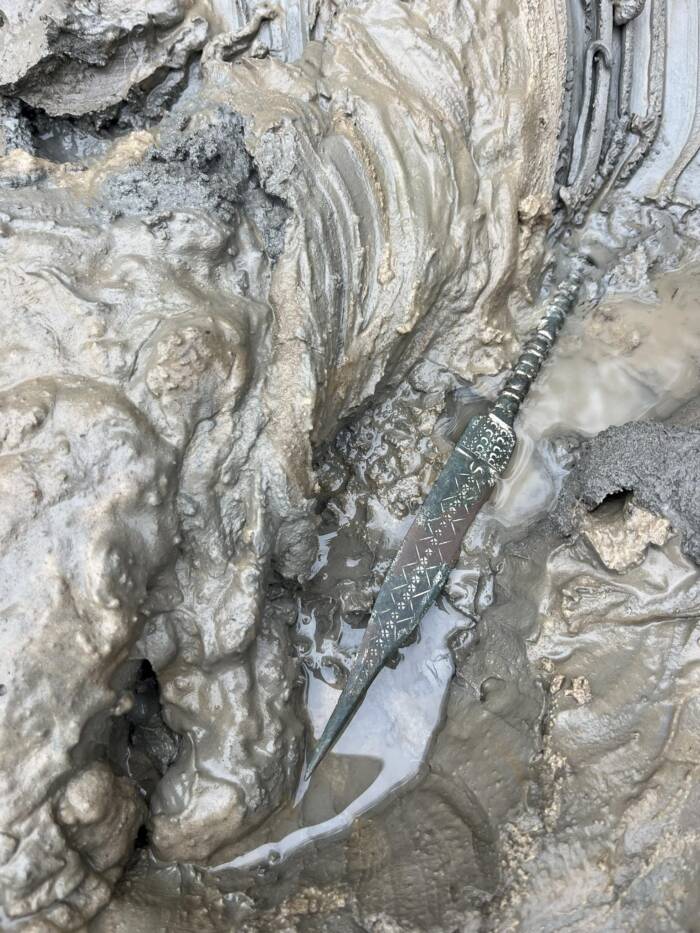
Museum of the History of Kamień LandThe 2,800-year-old dagger in the clay where it was embedded for millennia.
When Jacek Ukowski and Katarzyna Herdzik first pulled the dagger from the broken piece of cliff it was embedded in, they were stunned. “I didn’t expect to make such a big discovery,” Herdzik said in a statement on Facebook posted by the Museum of the History of Kamień Land, “but the moment I saw this item, I just knew it could be something valuable.”
The dagger has been immaculately preserved over the past 2,800 years, making it one of the most valuable finds of its kind in Poland. It is engraved with crescent moons and crosses that resemble stars, and a design down the center of its blade may represent a constellation. The handle features ridges, diagonal marks, and a pointed head.
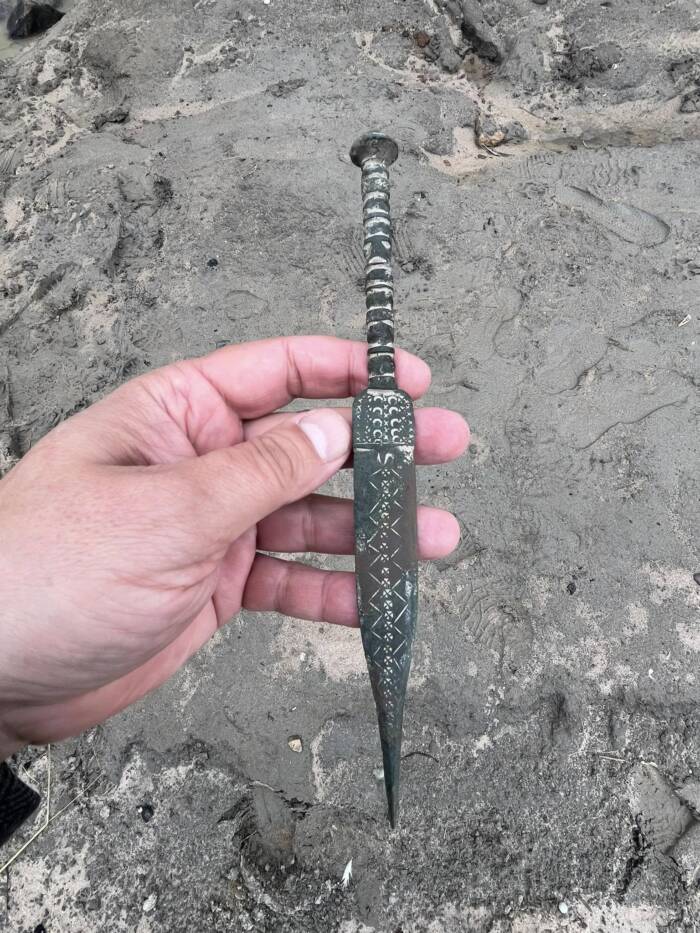
Museum of the History of Kamień LandThe elaborate designs on the dagger.
Based on initial observations, these decorations could indicate some relation to an ancient “solar cult.” Or, the dagger may have belonged to a wealthy warrior. The museum referred to it as “a true work of art and an example of a high level of metallurgy.”
Now, experts are working to learn more about the Iron Age artifact.
What Analysis May Reveal About This Ancient Dagger
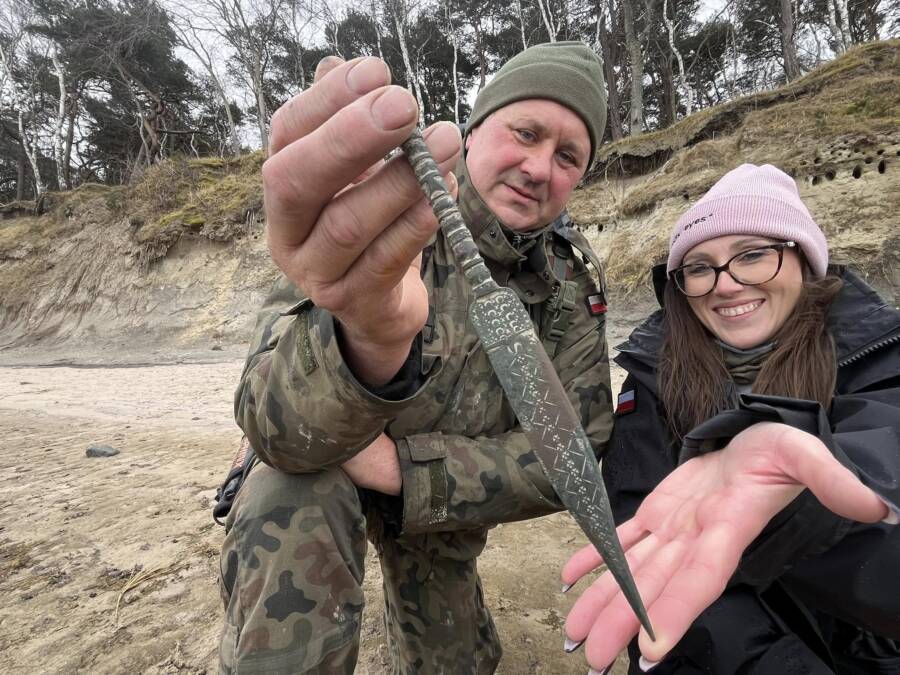
Museum of the History of Kamień LandFuture analysis will reveal the exact composition of the dagger, including the levels of copper and tin it contains.
Grzegorz Kurka, the director of the Museum of the History of Kamień Land, told the Polish Press Agency (PAP), “I have not seen such a dagger in my experience with findings in Polish territories.”
Jacek Ukowski called the artifact his “most precious discovery.” Ukowski heads a group called the Exploration Association for the Saving of Monuments, and he has found other valuable relics in the past, including a broken papal bull possibly linked to Pope Clement VI.
Experts at the museum now plan to analyze the dagger, and they hope they will learn more about where it was made. It may have been crafted in the region, but Kurka has another theory, too. “Perhaps it is an import and was cast in one of the workshops in southern Europe,” he hypothesized.
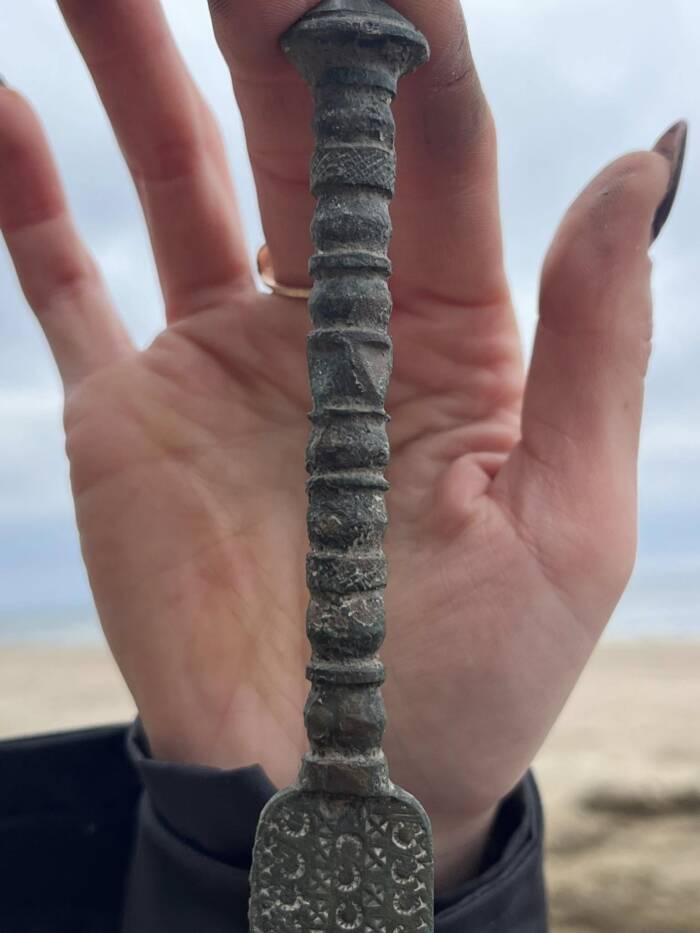
Museum of the History of Kamień LandThe dagger is 9.5 inches in length.
Further study of the artifact’s wear patterns will also reveal whether it was used in battle or for ritualistic purposes.
“The discovery of this dagger is… a testimony to the extraordinary history of the region,” Kurka exclaimed. Indeed, after analysis is complete, the ancient weapon will go on display at a Polish museum for everyone to appreciate.
After reading about the Iron Age dagger found along a Polish beach, learn about the shotel, the curved blade wielded by ancient Ethiopian warriors. Then, discover the history of the winged hussars, the elite Polish cavalrymen of the 17th century.





